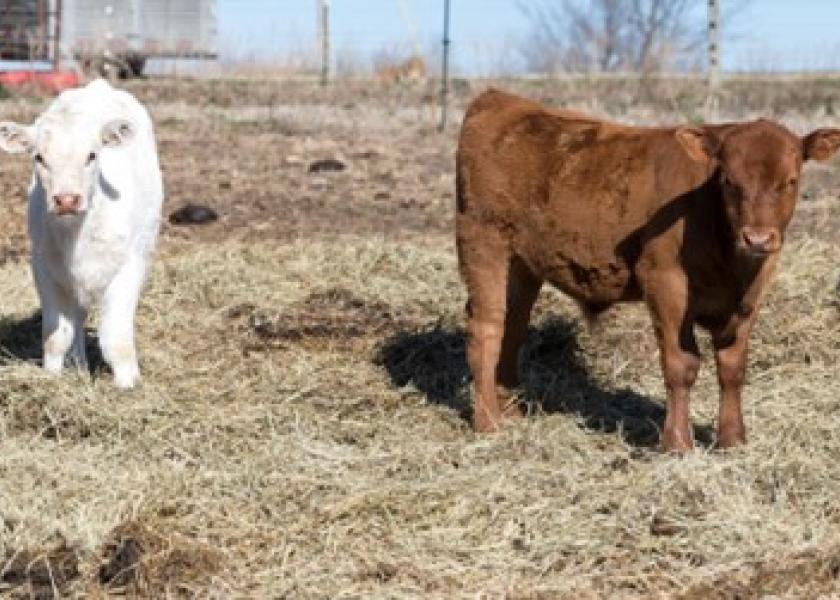Focus on Sanitation and Awareness to Prevent Johne’s Disease

Johne’s disease is usually spread to young calves through contact with infected manure or milk but infected cattle don’t show signs of the disease until several years later.
Johne’s disease is gaining greater attention among beef cattle producers and veterinarians who work with beef cattle. Johne’s was first described in Germany early in the 20th century and is caused by the bacteria Mycobcterium paratuberculosis (which is related to the bacteria that causes tuberculosis in humans). The disease is usually spread to young calves through contact with infected manure or milk but infected cattle don’t show signs of the disease until several years later.
The disease is more common among dairy herds compared to beef herds, primarily because dairy production is more confined with greater potential calf exposure to the manure of adult cattle but can be a problem in some beef herds particularly herds marketing replacement bulls and heifers.
Johne’s is primarily a disease of cattle, but can affect other ruminants such as sheep, goats, and even deer. The organism invades the small intestine and grows very slowly. Over time the organism spreads and infects more of the small intestine until enough of the intestine is thickened to cause diarrhea and weight loss even though the animal is eating well and behaves normally.
Early in the disease, very few of the organisms are shed in the feces but as the infection involves more of the intestine, the animal sheds increasingly more of the bacteria in the manure. Older animals are fairly resistant to infection with the organism, but young calves are susceptible.
Calves most commonly become infected during suckling by contact with their dam’s feces or the feces of other cows on their dam’s udder. The organism is also present in the colostrum and milk of heavily shedding dams. The younger the animal and the higher the dose of bacteria that the animal swallows, the greater the likelihood that the calf will become infected. In addition to swallowing the organism from contaminated teats or from colostrum or milk, the organism can also pass from the dam to the fetus during pregnancy.
Cows that are in late stages of the disease (obviously losing weight and having diarrhea) will pass the organism to 20% to 40% of their calves during pregnancy and about 8% of calves from cows in early stages of the disease will be born with the infection. The bacteria that causes Johne’s can live in the environment for up to a year and manure contamination of clothes, boots, and equipment could also move the agent from one farm or ranch to another or from one part of a farm or ranch to a distant part.
The economic loss of Johne’s in beef herds is fairly low at this time. A few animals will die or be so emaciated that they are condemned if presented for slaughter. Of greater potential economic impact is buyer perception of the importance of Johne’s disease. In the future, cattlemen may place great importance on purchasing cattle only from herds at low risk for Johne’s, and producers with infected herds would find the value of any bulls or heifers offered for sale to be discounted, and producers with low-risk herds would find the value of their animals increased.
The difficulty in controlling Johne’s disease is that our current tests are only accurate fairly late in the disease process when the slow growing bacteria have reached a high enough population to be readily detected. We don’t have accurate tests for young cattle, so that infected cattle can stay in the herd shedding the organism at low levels into the environment before they can be detected, and young animals that are already infected are likely to test negative and can be purchased even though an effort is made to exclude test-positive replacements. No treatment is available to cure Johne’s in cattle.
The only way to rid a herd of the organism is to identify infected cattle and remove them as soon as possible and instituting control methods to prevent infection of new young replacement stock.
Voluntary control programs to minimize the risk of Johne’s have been implemented in some U.S. dairy herds. Those control programs focus on finding cows that shed a lot of Johne’s-causing organisms (our current tests are pretty good for this task) and removing them and their offspring from the herd. Also, efforts are focused on sanitation for the young calf – minimizing contact between young cattle (<6-12 months of age) with manure from adult animals and the milk and colostrum of cows other than their own dams.
Efforts are also focused on preventing the introduction of possibly infected cattle into a herd by eliminating the introduction of replacement cattle from unknown sources (such as leasing bulls, purchasing nurse cows) and eliminating practices such as fertilizing pastures with manure from another farm.
In general, beef herds should not obtain calves or colostrum from dairy herds unless the dairy herd is involved in a Johne’s control program and is at low risk for the disease. Beef producers should also cull any animal with chronic diarrhea and any of that animal’s offspring who are in the herd – even if the cow is pregnant. A strategy to improve sanitation and place constraints on animals entering the herd will help prevent many other diseases besides Johne’s.
In addition to these baseline controls, some purebred herds follow testing guidelines approved by the National Johne’s Working Group (NJWG) and national U.S. Animal Health Association (AHA). In part, these guidelines recommend initially testing 30 females (three years and older) utilizing an ELISA blood test. Statistically, if all of those cows test negative you can be 85% sure that the herd does not have any Johne’s-infected cows. The NJWG guidelines recommend follow up procedures to further document a herd’s low-risk status over time.







